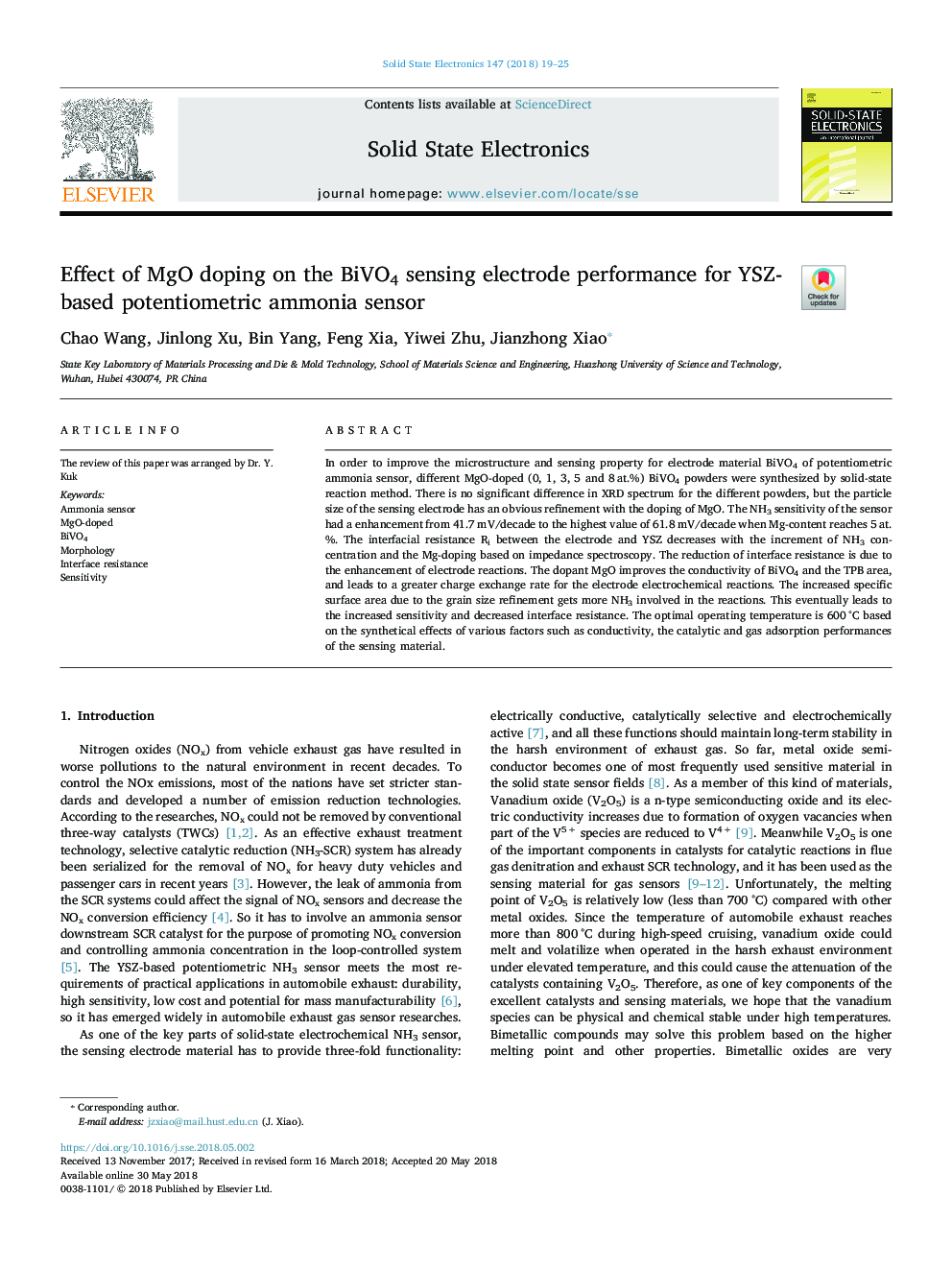| Article ID | Journal | Published Year | Pages | File Type |
|---|---|---|---|---|
| 7150199 | Solid-State Electronics | 2018 | 7 Pages |
Abstract
In order to improve the microstructure and sensing property for electrode material BiVO4 of potentiometric ammonia sensor, different MgO-doped (0, 1, 3, 5 and 8â¯at.%) BiVO4 powders were synthesized by solid-state reaction method. There is no significant difference in XRD spectrum for the different powders, but the particle size of the sensing electrode has an obvious refinement with the doping of MgO. The NH3 sensitivity of the sensor had a enhancement from 41.7â¯mV/decade to the highest value of 61.8â¯mV/decade when Mg-content reaches 5â¯at.%. The interfacial resistance Ri between the electrode and YSZ decreases with the increment of NH3 concentration and the Mg-doping based on impedance spectroscopy. The reduction of interface resistance is due to the enhancement of electrode reactions. The dopant MgO improves the conductivity of BiVO4 and the TPB area, and leads to a greater charge exchange rate for the electrode electrochemical reactions. The increased specific surface area due to the grain size refinement gets more NH3 involved in the reactions. This eventually leads to the increased sensitivity and decreased interface resistance. The optimal operating temperature is 600â¯Â°C based on the synthetical effects of various factors such as conductivity, the catalytic and gas adsorption performances of the sensing material.
Related Topics
Physical Sciences and Engineering
Engineering
Electrical and Electronic Engineering
Authors
Chao Wang, Jinlong Xu, Bin Yang, Feng Xia, Yiwei Zhu, Jianzhong Xiao,
